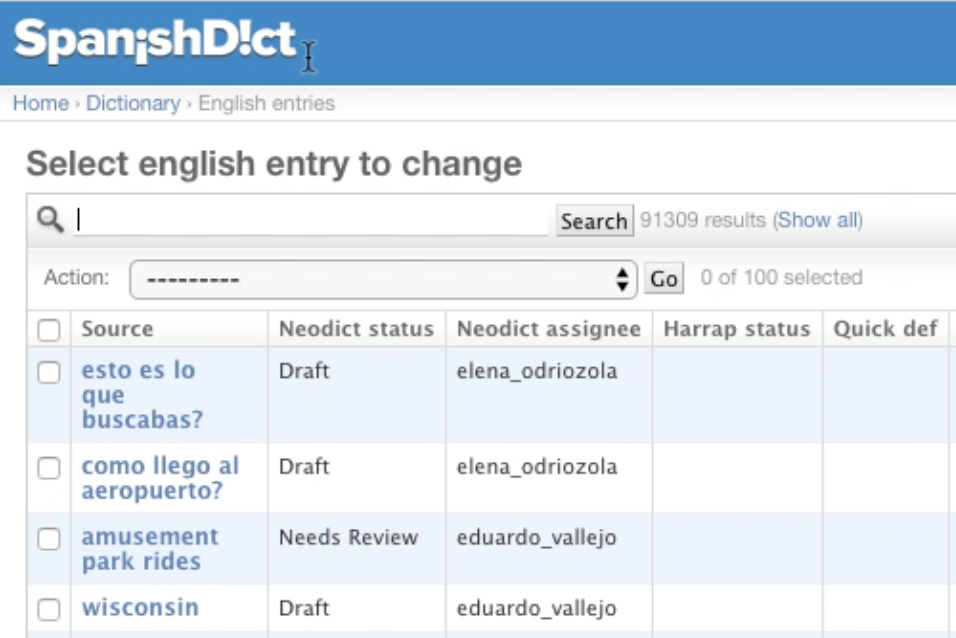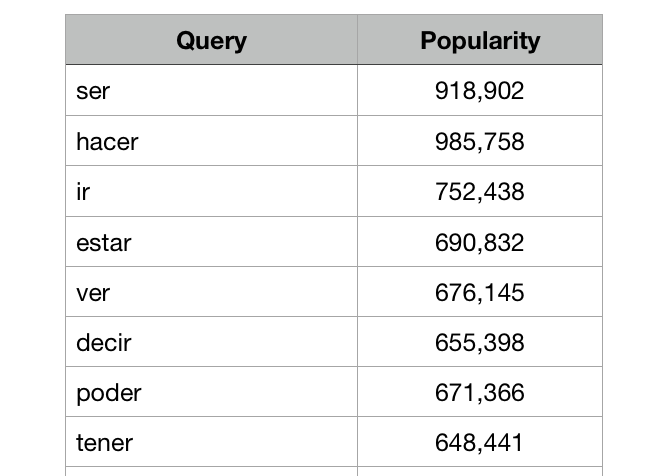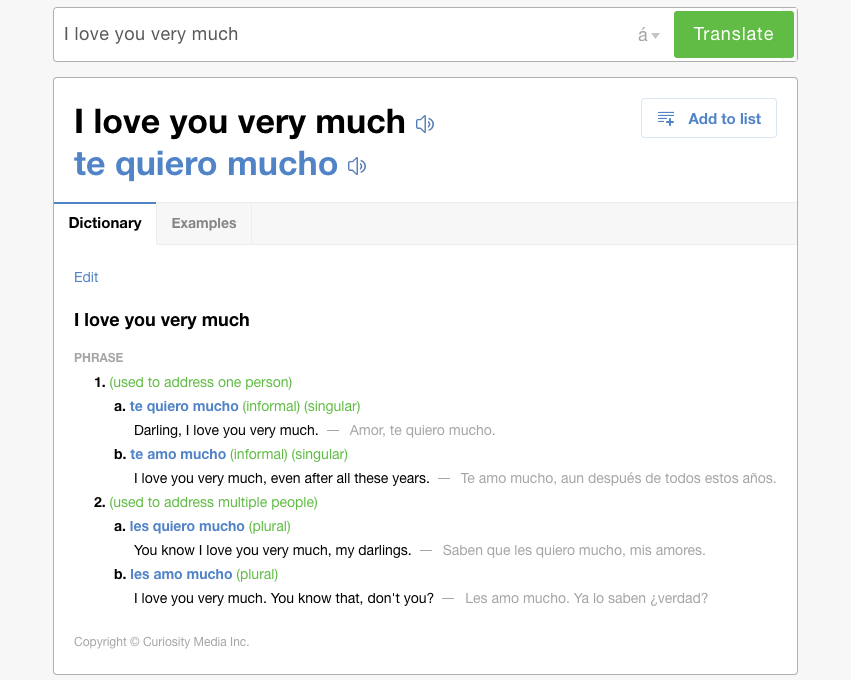Data-Driven Content Strategy
ProductBehind the scenes of the web’s most popular Spanish-English language education site, SpanishDict.com, we built datasets from learners’ search queries that contained millions of pieces of human-entered text. Leveraging insights from this data gave us a unique advantage in our content strategy and drove traffic growth from 9M to 15M unique visitors per month.
Our data-driven content strategy was built on three pillars:
- Develop tools for efficient, Agile content creation
- Create tight feedback loops between user search data and the content creation roadmap
- Incorporate trends in user interaction data into our product roadmaps
Tools for Agile Content Creation
When we set out to write our own dictionary content from scratch, we knew that the first step was to make it easier to publish content. In the past, editing an entry required the content team to coordinate with engineers to update XML directly in the database.
For our new dictionary, I worked closely with the content team to build them a customized content management system (CMS).

Now, content creators can easily make changes to move entries through the publishing pipeline without any help from engineering. Our content doesn’t hit the press once a decade like the paper dictionaries of old; we ship new content every day.
User feedback loops
Instead of writing our dictionary from A to Z, we answered users’ most-searched questions. I wrote scripts to clean query data, aggregate similar queries with natural language processing, count the hits, sort them based on popularity, and import the data into the content management system. As a result, the CMS always contained a priority-ordered list of placeholder entries, ready to be written by content experts.

Newly published content is now directly impacted by what users are searching for, which helps us stay on top of trends. For example, when Justin Bieber’s song “Despacito” gained popularity in 2019, we noticed the trend early and created content to help learners understand the word “despacito” and the song lyrics. While the song “Despacito” raced to the top of the charts, we rode the trend to the top of Internet search results.

Our data-driven content roadmaps makes our team responsive to users’ curiosity about seasonal or trending words and phrases. In turn, we’re able to build trust with our audience that we’ll be there to answer their questions, even when traditional dictionaries can’t keep up.
Enhanced product roadmaps
By leveraging insights from user search data, I was able to enhance product roadmaps to close gaps between what users wanted to learn and what resources our product offered.
For example, our data taught us that users weren’t just searching for single words. They were also trying to look up phrases, even though traditional dictionaries (and our legacy licensed content) rarely cover many phrases. Consequently, users had to search for each word in a phrase separately, select the right translations, and put them together correctly.
To better serve our users, we expanded our content to include phrases. I worked with the content team to ensure that phrases were represented correctly in our database, and I customized the display of these entries to their satisfaction. As a result, we significantly increased our coverage of commonly searched phrases, and many users are now taken directly to a page about their specific phrase with detailed translations and confidence-boosting examples.

In addition to improving the user experience, creating entries for phrases expanded the breadth of our content, often beyond that of our competitors. In turn, search engines indexed more of our pages, boosting our site’s overall visibility.
Of course, not all phrases had enough individual traffic to justify the cost of an expert-written entry. However, as a category, “long-tail” queries, or longer phrases, made up enough traffic to warrant some coverage.
To address these rarer, long phrases, I built a word-by-word translation feature that showed our top translations for each word in the phrase and a link to those entries. I also integrated third-party machine translation services like Google Translate and Microsoft Translation Services to provide multiple computer-generated guesses at the translation of the phrases.

Even without a custom entry for those phrases, we were able to generate unique content to help users get their questions answered. Where a user might encounter a “Not Found” page on another site, we were able to build brand loyalty by being there for them on their hardest questions.
Data-Focused Means User-Focused
On the surface, it might seem like writing a dictionary would be straightforward - you just work you way from A to Z and write the definition for each word. However, we harnessed insights from large datasets of real user search terms to strategically produce content and invest engineering resources. Most of all, it put the voice of the user front and center and spurred growth from 9 million to 15 million unique users per month.
